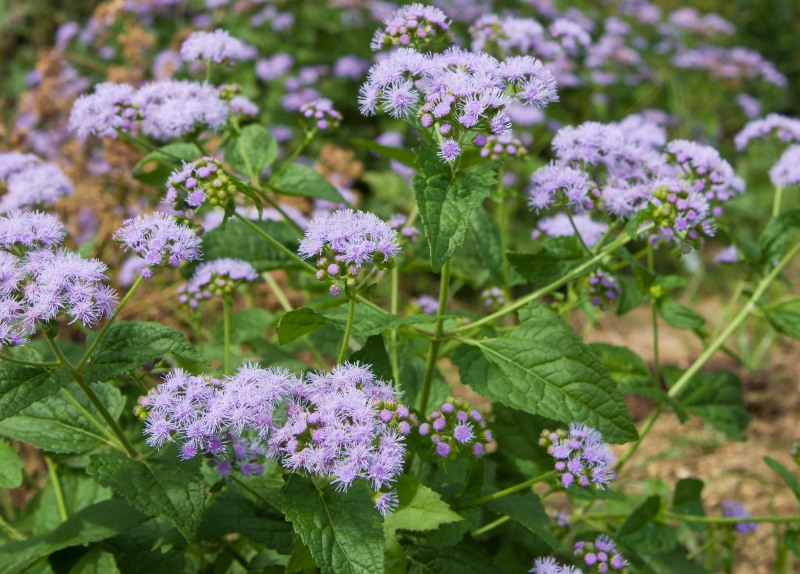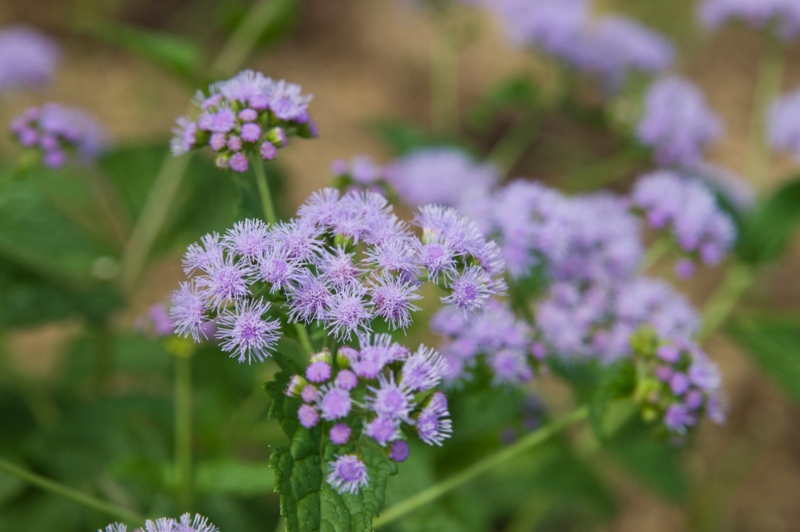
The mistflower is named for its fuzzy, misty flowers that come in purple, blue, and light blue. The stems grow as tall as 3′. It is hardy in zones 5 through 9. The flowers are made from many small florets combining to make a large glower that can be as large as 4″ across. The flowers bloom from later summer through the first frost of fall.
It’s a perfect plant for a butterfly garden, as they love to drink from it.
It is also a favorite of deer, however, so planting deer-resistant plants, such as marigolds and daffodils, next to it can help to keep them away.
Light and Temperature Requirements
The mistflower will tolerate both full sun and partial shade. If you live in a hot climate, it can benefit from having some shade in the afternoon. If it is kept in full sun all day, be sure to water it regularly to make up for the hot temperatures. The plants are frost hardy, and some varieties of the plant are hardy even when their roots get down to 0 degrees. If you are propagating it by seed, the temperature for germination should be at 68 to 86 degrees for about two weeks.
Watering
The soil of the mistflower should stay moist. They have some level of drought tolerance, but they prefer to keep moist soil all the time. If you get a lot of rain, this may be sufficient for the mistflower. If not check the soil once or twice a week to make sure it isn’t dry, and water it if it is. Using mulch on top of the soil can help keep moisture in longer.

Soil & Fertilizing
The soil used for the mistflower doesn’t have to be particularly rich. It thrives in soils that are fertile, but they will tolerate average soil. Mistflower in nature grows in wet areas like moist meadows, low woods, in ditches, and close to bodies of water. To recreate this type of soil, it should be well-draining as well as having access to continuous moisture. The plant particularly thrives when it has a soil full of plenty of organic material. It can benefit from being fed a diluted liquid fertilizer once in the spring and once in the middle of summer.
Deadheading and Pruning
As soon as blooming is over, cut back the faded flowers to keep the plant from re-seeding. Pruning it regularly can also help it to grow in a more compact shape rather than becoming leggy and tall. After blooming ends, you can also cut back the plant to near the ground and allow it to grow back in the spring.
Beware: Invasive Nature
The mistflower is called a wildflower by some and a weed by others. In many different regions of the country, it is considered an invasive weed that can drive out native plant species. It can easily divide both by growing new rhizomes aggressively and by self-seeding.
Before planting mistflower outdoors, find out whether it is a problem plant that has taken over outdoor areas in the region. In some cases, it may be best to either keep it indoors or stay on top of its deadheading to make sure it doesn’t spread its seeds. If you do prune it to remove seeds, it will still grow through rhizomes underground.
To stay on top of its size, divide the rhizomes every two or three years. These can be planted elsewhere or discarded.




